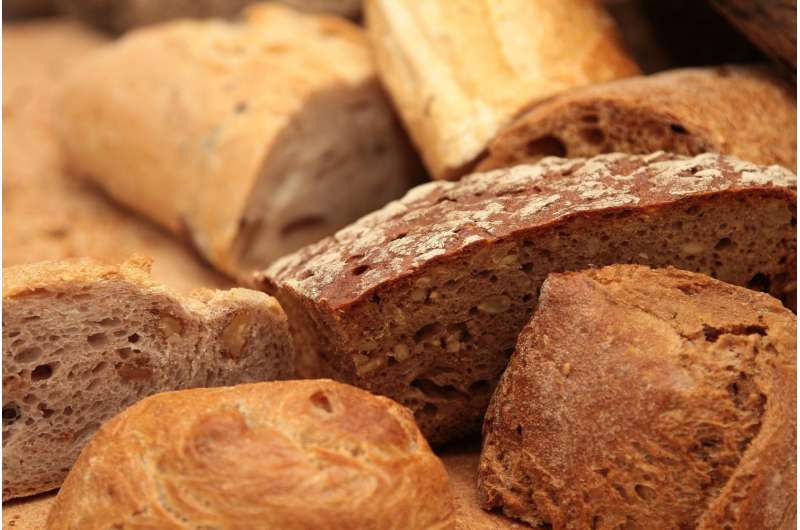Tackling iron and zinc deficiencies with 'better' bread

The health effects of zinc and iron deficiencies can be devastating, particularly in developing countries. One strategy for addressing this problem involves fertilizing crops with the micronutrients. But no one has yet figured out whether these added nutrients end up in food products made with the fortified crops. Now researchers report in ACS' Journal of Agricultural and Food Chemistry that this type of biofortification can boost micronutrients in bread, but other factors are also important.
Anemia affects more than 30 percent of the world's population, and many cases are due to iron deficiency, according to the World Health Organization. Many of the same people are also affected by zinc deficiencies. These conditions can lead to impaired growth, neurological problems and even early death. To combat deficiencies in iron and zinc, the nutrients can be applied to crops, so they will ultimately end up in food products. But few studies have investigated whether the common practice of foliar fertilization—applying micronutrients to leaves—has the desired result. So Valentina Ciccolini and colleagues set out to determine how effective this strategy might be, using wheat as their study crop.
The researchers found that fertilizing an old variety of wheat crop increased its flour's concentration of zinc by more than 78 percent. Iron levels remained about the same regardless of whether varieties were biofortified; however, the old variety in the study had higher concentrations of the micronutrient than the modern variety. The analysis also showed that milling grains, regardless of whether they came from biofortified crops, into whole wheat flour versus white flour resulted in higher levels of iron, zinc and other health-promoting compounds, including antioxidants. Additionally, the process of bread-making slightly changed iron and zinc concentrations, but greatly boosted their bioavailability by 77 and 70 percent, respectively. The researchers say their findings demonstrate that biofortification, milling technique and baking should all factor into strategies for enhancing bread with iron and zinc for fighting deficiencies.
More information: "Biofortification with Iron and Zinc Improves Nutritional and Nutraceutical Properties of Common Wheat Flour and Bread" Journal of Agricultural and Food Chemistry (2017). pubs.acs.org/doi/abs/10.1021/acs.jafc.7b01176
Journal information: Journal of Agricultural and Food Chemistry
Provided by American Chemical Society



















